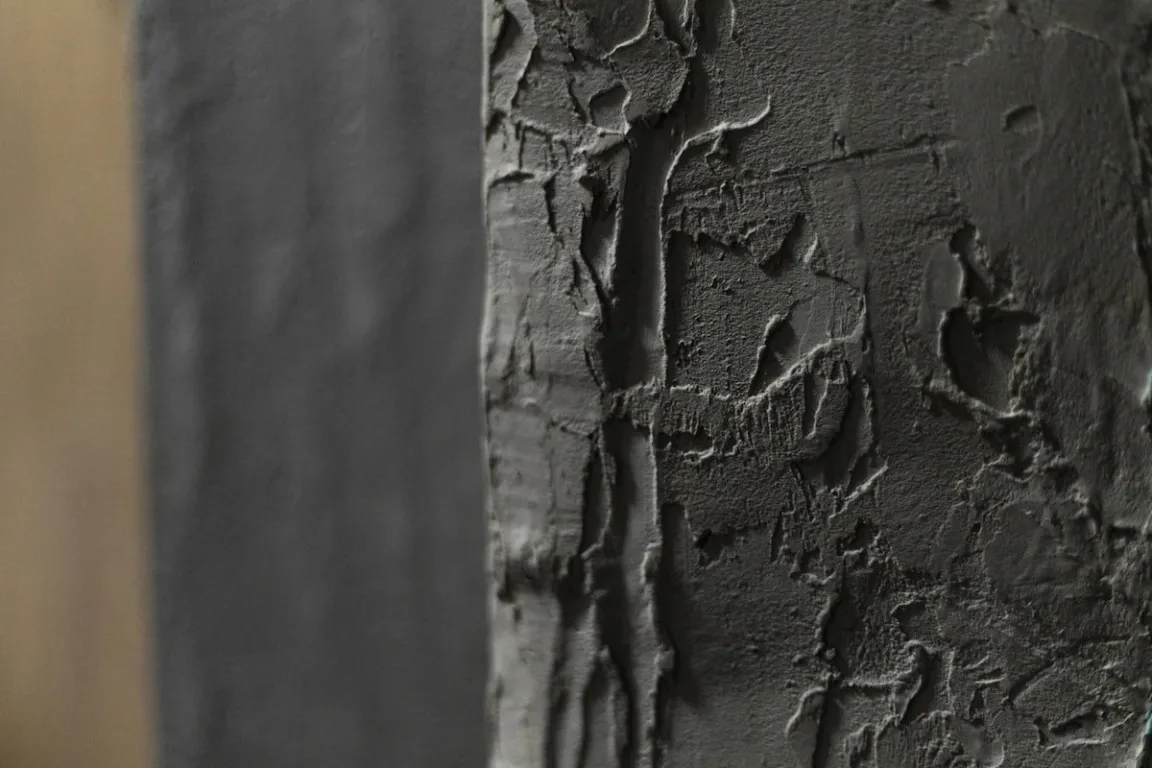Exposed plaster is becoming increasingly popular as a design element in industrial and minimalist homes. Whether applied to walls or floors, the unfinished look of exposed plaster gives an artistic, natural, and unique impression.
In addition to being aesthetically pleasing, walls or floors made of exposed plaster are also economical and require minimal maintenance, making them suitable for those who want to build a home with a budget-friendly concept that is still attractive. Want to know more about its advantages and how to make it? Check out the following explanation.
What Is Exposed Plaster?
Exposed plaster is a finishing technique that highlights the original color of cement without additional paint or coating, generally gray, although there is also white plaster. This technique is often used in industrial styles, inspired by warehouses or factories, and is now popularly applied to homes.
For a more attractive look, especially on floors, exposed plaster should be plastered and can be given additional color with a mixture of metallic oxide pigments or lime-proof colors. As a finishing touch, it is recommended to coat exposed plaster with a special liquid or floor hardener.
This coating protects the cement from friction, moisture, and extreme weather, and makes it easier to clean like a regular floor. Although it may appear unfinished, exposed plaster floors can still be mopped and cleaned like regular floors.
How to Make Exposed Plaster
There are several techniques you can try to make good and durable exposed plaster. The two common techniques to make exposed plaster are the scratching technique and the kamprot technique. Here is an explanation of each.
1. Using the Scraping Technique
The scraping technique for exposed plaster uses a molded board with a pattern, such as straight or tapered teeth. This pattern can be applied vertically, horizontally, or in other shapes as desired. When applying this technique, you need to be careful and mindful so that the results are neat and the pattern is well-formed.
2. Using the Kamprot Technique
The kamprot technique can be done manually or using a machine. The manual method produces a rough surface with sand grains, using a wire sieve and shovel to spray the cement mixture from a distance of 5–10 cm and then level it. Meanwhile, with a machine, a concrete spraying tool is used to produce smoother, flatter, and neater results.
Read also: How to Create an Aesthetic Industrial Wall & Design Ideas
The Advantages of Exposed Plaster
Exposed plaster offers various advantages that make it increasingly popular as a building finishing option. Here are some of the main advantages of exposed plaster that you need to know.
1. Weather Resistance
Exposed plaster made from a mixture of concrete and cement is highly resistant to extreme weather conditions. When used on exterior walls, the structure can last a long time and remain sturdy. The surface is also not easily damaged or stained by friction, as long as it is given a transparent coating as a finishing touch.
2. Natural Finish
Exposed plaster finishes have a natural look with the original gray color of cement, not paint. The subtle, uneven colors and patterns, are due to variations in the mixture and drying time. This finish effectively creates a cool, masculine feel, especially when combined with steel and black colors.
3. Easier to Maintain
Once exposed plaster walls are coated, maintenance becomes easier. The surface will be smoother and leave no residue, such as grayish chalk. Dirt and dust also do not stick easily, so you do not have to bother cleaning them every day.
4. Non-Slip Surface
Exposed plaster has a non-slippery surface even when exposed to a lot of water. This feature makes it very suitable for bathroom or terrace walls because the risk of slipping is lower than with ordinary tile floors.
5. More Affordable
Applying exposed plaster is clearly more cost-effective than ordinary walls or floors. You no longer need to buy paint or tiles. The only finishing required is a transparent coating layer to make the surface more durable and attractive.
Read also: 11 Low-Budget Industrial House Design: Aesthetic and Stylish
The Disadvantages of Exposed Plaster
Although exposed plaster has many advantages, there are also several things you need to consider before choosing it. It is important to recognize these disadvantages so that you are not surprised and can make the right decision. Here are some of the disadvantages of exposed plaster.
1. Rooms Tend to Be Damp
One of the disadvantages of exposed plaster is that it can make rooms feel more damp. To overcome this, you need to ensure that there are large openings in the house, such as glass walls or roofs, so that natural light can enter freely. Installing a dehumidifier in the room can also help absorb moisture.
2. The Process Is More Difficult
The process of installing exposed plaster is more difficult than installing regular walls or floors. Therefore, you cannot just choose any contractor. Make sure to choose a contractor who is truly an expert so that the results are even and neat. Experienced contractors are also usually more proficient in various techniques for applying exposed plaster to your home.
3. Hairline Cracks Will Be More Visible
One of the disadvantages of exposed plaster is that hairline cracks will be more noticeable due to its natural appearance. If the cement mixture is not right, the surface will crack more easily. Although these cracks are small and not too problematic structurally, they can affect the overall appearance of your home.
Tips for Choosing Exposed Cement
If you are interested in industrial style, choose exposed cement that is specifically designed for exposed plastering. This product is designed with special technology, such as adhesion to various surfaces, anti-cracking formulation, abrasion resistance, dust-free finish, and water repellent properties to prevent moss and mold.
Exposed plaster is divided into two types based on the area of application, namely for interiors and exteriors. For interiors, the water repellent function can be enhanced with an additional layer of protective coating.
That is an explanation of the advantages and how to make exposed plaster for the walls and floors of your home. In addition to giving a natural and aesthetic impression, the use of exposed plaster is also more economical because it requires minimal maintenance and does not require additional finishing, such as paint.
However, to achieve maximum and long-lasting results, the selection of building materials is equally important. Ensure you use premium quality cement, such as Semen Merah Putih Watershield, which is specially designed with water repellent technology to provide triple protection against water seepage from outside, inside, and from the ground.
Semen Merah Putih Watershield is a super premium multi-purpose cement suitable for application on various building elements, from foundations, concrete slabs, brickwork, to plastering and skim coat.
This technology makes your building stronger, more durable, and low-maintenance, making it ideal for homes with an exposed plaster concept.
Interested in creating an industrial or minimalist style home with exposed plaster? Contact us for more information about Semen Merah Putih products that are best suited for your project.



